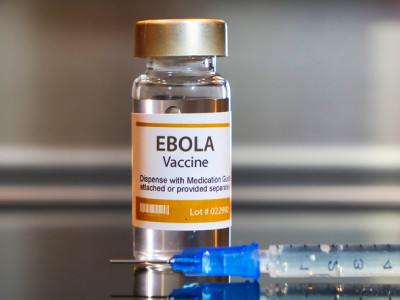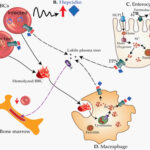Zaire ebolavirus, the most lethal species of the Ebola virus, poses a significant threat to global public health due to its high mortality rate and potential for widespread outbreaks. Vaccination has emerged as a critical tool in mitigating the impact of this filovirus. Effective vaccines have been developed and deployed with measurable success, particularly in high-risk regions of Africa. Understanding the nature, development, and implementation of Zaire ebolavirus vaccination is essential for strategic disease control and outbreak response.

Overview of Zaire Ebolavirus and the Need for Vaccination
Zaire ebolavirus (EBOV) is responsible for the majority of human Ebola outbreaks, with case fatality rates often exceeding 50%. The virus spreads through direct contact with infected body fluids, necessitating swift containment and prevention strategies.
Vaccination not only protects individuals at risk but also interrupts transmission chains through ring vaccination, reducing the potential for epidemic spread. Given the zoonotic origins and human-to-human transmission pathways of EBOV, immunization serves as a frontline defense against emergent outbreaks.
Ervebo (rVSV-ZEBOV): The First Licensed Vaccine Against Zaire Ebolavirus
Development and Composition
Ervebo (rVSV-ZEBOV) is a replication-competent recombinant vesicular stomatitis virus-based vaccine, in which the gene encoding VSV glycoprotein has been replaced with the gene encoding EBOV glycoprotein.
- Developer: Merck & Co., Inc.
- Licensed: 2019 by the U.S. FDA, EMA, and WHO prequalification
- Target Virus: Zaire ebolavirus strain
Mechanism of Action
Once administered, Ervebo expresses the EBOV glycoprotein, eliciting a strong innate and adaptive immune response. This includes the production of virus-neutralizing antibodies that prevent future infection by binding to the virus and blocking its entry into host cells.
Clinical Trials and Efficacy of Zaire Ebolavirus Vaccination
Key Clinical Trial: Guinea Ring Vaccination Trial (2015)
- Study Design: Cluster-randomized ring vaccination during the 2014–2016 West African Ebola outbreak
- Population: 11,841 participants
- Outcome: 100% efficacy in the vaccinated group; no Ebola cases 10 days post-vaccination
Additional trials in the Democratic Republic of Congo during successive outbreaks further validated the vaccine’s efficacy under emergency use protocols.
Summary of Efficacy:
| Trial Location | Population Vaccinated | Efficacy (%) | Adverse Events |
|---|---|---|---|
| Guinea (2015) | ~4,000 | 100% | Mild to moderate |
| DRC (2018–2020) | >300,000 | >97% | Well tolerated |
Vaccine Safety and Adverse Reactions
Ervebo has demonstrated a favorable safety profile in both clinical and field settings. Common side effects are generally transient and self-limiting.
Frequently Reported Reactions:
- Injection site pain
- Fever
- Headache
- Fatigue
- Arthralgia
Severe adverse events are rare and continue to be monitored through post-licensure surveillance systems.
Cold Chain and Storage Requirements
Maintaining vaccine efficacy requires strict cold chain management:
- Storage temperature: -60°C to -80°C
- Shelf life: Up to 2 years under appropriate conditions
- Field deployment: Requires specialized equipment and logistics for remote area access
In outbreak settings, portable ultra-cold freezers and community mobilization teams ensure safe distribution.
Vaccination Strategies for Outbreak Containment
Ring Vaccination Approach
Ring vaccination involves immunizing close contacts of confirmed Ebola patients, along with contacts of those contacts and frontline workers.
Mass and Preventive Vaccination
While ring vaccination remains primary, mass immunization campaigns are also considered in high-risk zones, particularly for healthcare and frontline responders.
Population Eligibility and Contraindications
Who Should Be Vaccinated?
- Healthcare workers and laboratory staff
- Contacts of confirmed Ebola patients
- Burial team members
- Residents in outbreak zones
Contraindications:
- Individuals with a history of severe allergic reactions to vaccine components
- Pregnant or lactating women (administered with caution depending on risk-benefit analysis)
- Immunocompromised individuals (case-by-case assessment)
Zaire Ebolavirus Vaccine Pipeline and Future Developments
While Ervebo targets Zaire ebolavirus specifically, researchers are working on multivalent vaccines covering multiple Ebola strains and related filoviruses like Sudan ebolavirus and Marburg virus.
Promising Candidates in Development:
- Ad26.ZEBOV/MVA-BN-Filo (Johnson & Johnson): Heterologous prime-boost regimen under evaluation
- GamEvac-Combi (Russia): Licensed in limited jurisdictions
- rVSV-based bivalent formulations: Targeting multiple Ebola strains
These next-generation vaccines aim to provide broader, longer-lasting protection and simplified logistics.
Global Vaccination Campaigns and Implementation Challenges
WHO and GAVI Initiatives
The World Health Organization (WHO) and GAVI, the Vaccine Alliance have supported vaccine stockpiling and distribution frameworks, enabling rapid deployment during outbreaks.
Implementation Barriers:
- Ultra-cold storage and infrastructure gaps
- Community mistrust and vaccine hesitancy
- Conflict zones complicating logistics
- Short supply in early phases of an outbreak
Addressing these requires ongoing investment in public health infrastructure, training, and community engagement.
Zaire ebolavirus vaccination has transformed the landscape of Ebola outbreak management. Ervebo stands as a cornerstone in preventing disease spread, protecting frontline workers, and curbing epidemic potential. Ongoing research and global coordination continue to refine vaccine strategies, expand access, and enhance readiness against future threats. A robust vaccination framework is essential not only for containing Ebola but for strengthening global epidemic preparedness.

